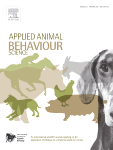Document type: Scientific review published in Animals
Authors: Agnieszka Ludwiczak, Ewa Skrzypczak, Joanna Składanowska-Baryza, Marek Stanisz, Piotr Ślósarz, Przemysław Racewicz
Preview: Humans who care for pigs prefer an environment that not only allows the pigs to express their natural behaviors but also limits the development of aggression and stereotypes. Most of the behavioral and health problems encountered by pigs in barren, conventional conditions are solved by alternative housing systems. However, it is not known whether these systems are advantageous in terms of the performance of pigs. In this work, we review the effects of housing systems on pigs' behaviors and performance, which are among the major indicators of the welfare of these animals. Research results point out that outdoor systems are more ideal for sows and fatteners than buildings. Nonetheless, outdoor housing is associated with two major effects in both groups: increased activity due to environmental exploration and higher space allowance, and increased incidence of injuries compared to indoor systems. Sows are more active when housed in groups, but they experience an increased frequency of injuries. According to the literature, group-housed sows give birth to healthy piglets with good daily weight gains. The difference in the fattening and slaughter performance of pigs raised outdoors vs. indoors remains unclear, and the results reported so far are inconsistent. Outdoor systems seem to be associated with a higher incidence of osteochondrosis and lesions of elbow and hock joints, whereas indoor systems cause a greater degree of body soiling in pigs. Based on the reviewed literature, it may be concluded that outdoor housing helps to solve behavioral issues in pigs but leads to other problems in pig production.






